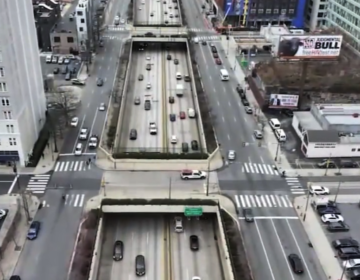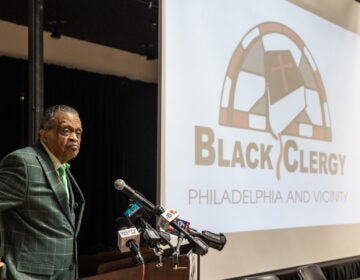Council OKs overlay, historic interiors bills

June 18
Previous coverage
By Kellie Patrick Gates
For PlanPhilly
City Council unanimously passed legislation aimed at creating a multi-use riverfront trail, a dense retail/commercial corridor, and connections between neighborhoods and the Delaware River via a waterfront zoning overlay. The district stretches between Oregon and Allegheny Avenues.
After the vote Thursday, First District Councilman Frank DiCicco, the bill’s sponsor, said: “while some are already calling for changes I am proud of final result.”
Waterfront goals have been outlined in the Civic Vision for the Central Delaware, a document put together by PennPraxis based on more than a year of community input. Both the mayor and the planning commission have endorsed the document. The temporary overlay was one of the goals outlined in the related Action Plan for the Central Delaware, a document outlining steps to make the Civic Vision a reality.
“This is very significant,” said PennPraxis Executive Director Harris Steinberg. “It demonstrates Councilman Frank DiCicco’s and Mayor Michael Nutter’s commitment to long-term implementation of the Civic Vision. While some of the details may not be exactly what was called for, the overall spirit and intent is consistent with the vision. This is an important day for Philadelphia.”
DiCicco said the legislation was the result of many different people working together – neighborhood advocates, planners, landowners, developers. He has described the overlay as a stop-gap measure to protect the waterfront from development that would hamper the city’s long-term goals for the Central Delaware while a master plan and the related zoning are developed.
Perhaps the most debated part of the overlay legislation was the size of the waterfront setback. The language that was approved calls for 100 feet or 10 percent, whichever is less. It also says that a land owner can appeal for relief to the Planning Commission.
The Central Delaware Advocacy Group, a committee whose members represent waterfront neighborhoods and organizations, has lobbied for the overlay. But they would have preferred 100 feet or 20 percent. Members of a pro-development non-profit called the Development Workshop say 100 feet is much too much for some parcels and that this amounts to a taking of land without compensation. They’ve lobbied against the overlay. Both groups met with DiCicco, top city planning officials, and each other as the bill evolved.
The legislation requires the Planning Commission to draw up a set of guidelines on how the overlay will be applied. Both groups will continue their lobbying efforts as this unfolds.
“What’s next is seeing how the Planning Commission is going to come up with standards for review, and when the board of surveyors is going to map this new line, so landowners can see what’s going to happen to their property,” said Craig Schelter, executive director of the Development Workshop.
“Regrettably, the Planning Commission has not addressed the costs to the city in reducing property values as a result of an overlay which could have the effect of impeding development,” said Michael Sklaroff, Workshop chairman and a partner with the law firm of Ballard Spahr Andrews & Ingersoll. He said the overlay could impede development “because there are not clear standards set out in an ordinance which would provide uniform requirements within a zoning district. The review of the planning commission is necessarily subjective and unpredictable.”
DiCicco and advocates of the legislation have countered this argument in the past, saying that the overlay and coming guidelines will establish very clear rules about what can and cannot be built.
“We’re handing out cigars.” said CDAG chairman Steven Weixler. “I know that it’s not perfect, but it’s something that everybody can work with.”
Weixler said CDAG has been so focused on getting the overlay passed that its members will need a few weeks to regroup and focus on their priorities for the overlay guidelines and the master plan. But one thing is already certain: CDAG will advocate for a change to 100 feet or 20 percent.
“We still believe that the 20 percent is achievable and desirable for the riverfront,” he said. Weixler is hopeful that advocates will be able to convince property owners that the bigger setback will actually make their properties and developments more valuable.
Chalk one up for the Boyd
City Council also gave its OK to a bill that would grant the city’s Historical Commission the authority to designate as historic the interiors of buildings with public spaces. It includes spaces that were used by the public in the past or the present, but not interiors that have already been altered. The Boyd Theatre is a prime example of a building that would be impacted by the legislation.
The bill, sponsored by at-large Councilman Bill Green, passed 14-2 with Council members Jannie Blackwell and Donna Reed Miller voting against it.
After the vote Blackwell said her objection was based on a feeling that the University City community is too divided over preservation issues and the cost associated with the bill.
No vote on Anderson property
A bill that would re-map the area bounded by Cumberland Avenue, Berks Street, and the river, did not come up for a vote. It was introduced by DiCicco, in whose district the 50 acres of land is situated, on May 14, and would change the property’s designation from “G2” (industrial) to “C3” (commercial mixed use).
This land, once the proposed site of the Pinnacle Casino development – which was not selected by the state – is owned by businessman James Anderson.
DiCicco is also the sponsor of that bill. His policy chief, Brian Abernathy, said DiCicco has decided to look further into the amount of industrial property available in Philadelphia before bringing the bill up for a final vote.
Council will recess until September.
Anderson property rezoning bill
Contact the reporter at kelliespatrick@gmail.com
WHYY is your source for fact-based, in-depth journalism and information. As a nonprofit organization, we rely on financial support from readers like you. Please give today.






